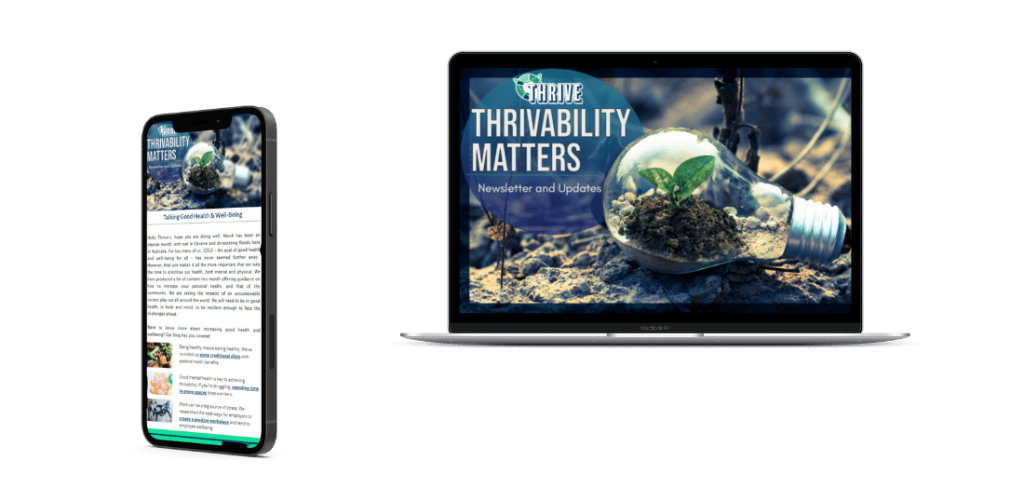
Get the latest in Thrivability Matters, direct to your inbox.
First, let’s consider what a business model is. Then, we can understand what a sustainable business model is. A business model is a formalised description of the mechanics by which an organisation creates, delivers, and captures value for its stakeholders (Osterwalder, A. and Pigneur, Y., 2010) Put simply, a business model is a description of the specific actions a business takes to achieve its goals.
A sustainable business model (SBM) “describes, analyses, manages, and communicates (i) a company’s sustainable value proposition to all its stakeholders; (ii) how it creates and delivers this value; (iii) and how it captures economic value while maintaining or regenerating natural, social, and economic capital beyond its organisational boundaries”
–Schaltegger, Hansen, & Lüdeke-Freund, 2016

Sustainability is a measure of something’s ability to continue. Undoubtedly, the more sustainable something is, the longer it lasts.
Here at THRIVE Project, we don’t just measure sustainability, we focus on thrivability. In fact, sustainability is the bare minimum required to continue. This means that sustainability metrics focus on living hand to mouth, day by day. Conversely, thrivability is about going beyond this notion, towards flourishing. This encompasses the concepts of regeneration and resilience. Sustainable business models are part of this.
In contrast to sustainable business models, past business models focused only on creating value for the business owner. Later, they expanded this to include internal stakeholders such as shareholders. However, these business models are still incomplete. This is because they don’t calculate the effect a business has on the world, or the impact of those effects on the business itself.
Sustainable business models take a holistic approach. In fact, no business operates in isolation; it exists within an ecosystem. At the very least, it relies upon a supply chain and a delivery chain. The sustainable value model shows how an organisation creates value from this ecosystem. Indeed, to continue generating value from the environment, an organisation must calculate its effects on that environment.
Therefore, sustainable business models can be conceptualised as complete or holistic business models. Furthermore, SBMs have evolved to include external stakeholders, such as society and the environment. This changes the calculation of any value creation model. A company must include the full impact of business practices on external stakeholders to determine the net value it produces.
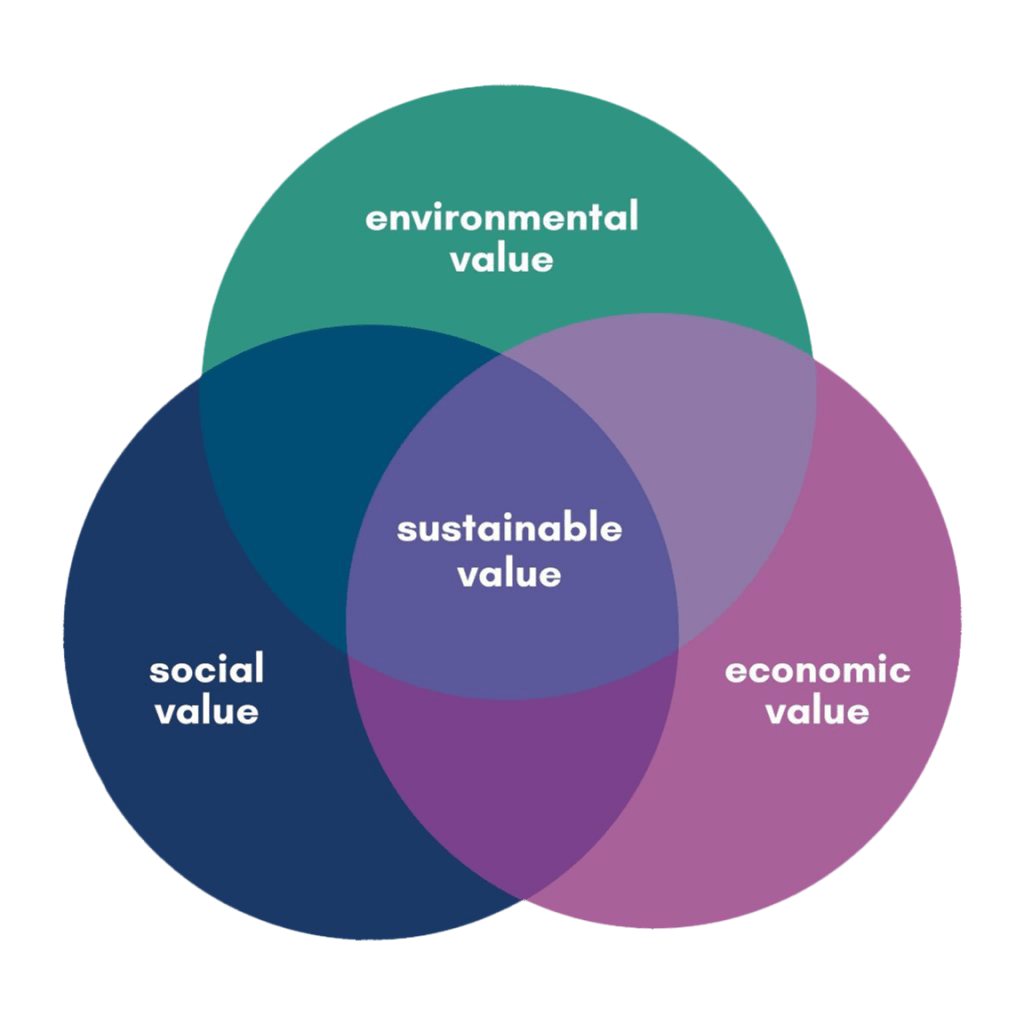
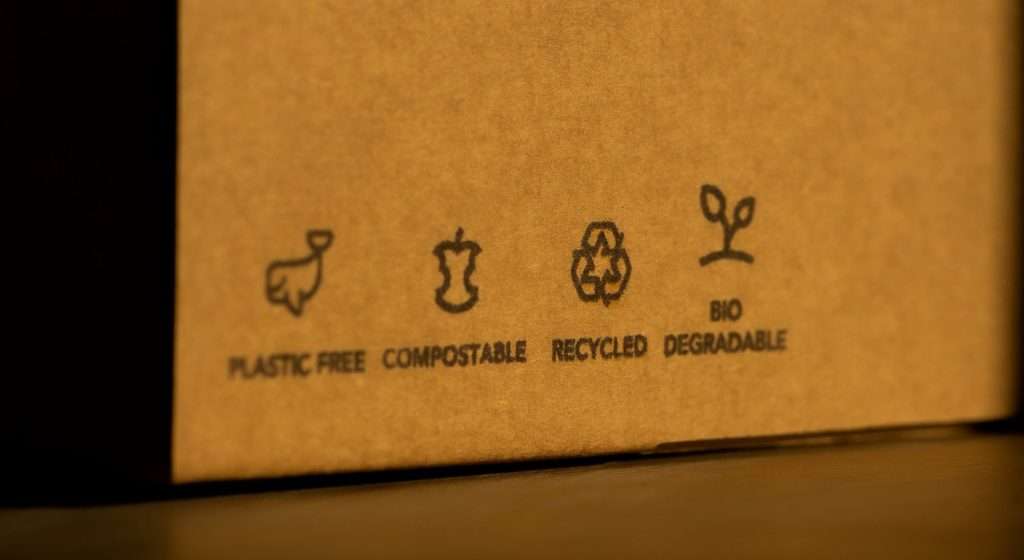
The strategy of an organisation is articulated by its business model. A sustainable business model describes how an organisation goes about its business and provides the expected outcomes for any suggested sustainable practices.
These practices are specific actions a business takes to increase thrivability. Typical examples involve reducing, reusing and recycling materials or products. For example, a company may switch to using recycled paper. Furthermore, it may stop using paper altogether by switching to digital communications. Similarly, switching from single-portion food products to bulk-buy products can reduce plastic waste.
Society is pressuring business leaders to look beyond creating shareholder value. Indeed, people want companies to generate value for the environment and society, as well. Long-term financial gain is only possible through thrivable development. Both start-ups and established businesses need to embrace sustainable business models within the fabric of their organisation. In conclusion, it’s the only way to ensure long term survival and thrivability.
Companies that use sustainable business models are more likely to succeed (Lindgardt et al. 2009). Business sustainability is the single most effective way to ensure long-term success (Fedeli, MD 2019).
Economic growth needs to be coupled with social value and mitigation of environmental impacts. A sustainable business model identifies risks in the current supply and value chain. Then, it integrates innovation to combat those risks and ensure prosperity.
Adopting sustainable business models also helps to create a positive brand image. People are becoming more critical of corporate impacts on the global environment. Sustainable business models are ethical business models, providing value to both shareholders and society. This makes them more attractive to eco-minded consumers, as well as potential employees.
Business model innovation (BMI) can also be conceptualised as risk management and minimisation. Continuing to rely on unsustainable business practices carries inherent risk. However, many business strategies do not consider those risks when calculating value.
This world has finite resources. Our societal focus on endless growth and consumption is rapidly depleting these resources. We are destroying ecosystems necessary for our species to survive. Current business practices negatively impact our forests and oceans. This reduces biodiversity and prevents them from acting as carbon sinks (Steffen et al. 2006). Indeed, we continue to rely upon fossil fuel energy, such as coal, oil, and gas, despite the negative impact on global temperature and air quality.
Any business that relies upon a continued supply of these finite resources will become unable to operate.

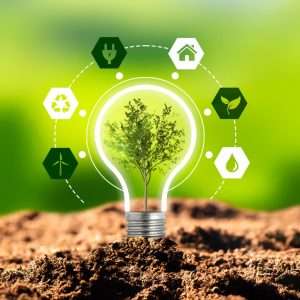
NO!
Contrary to popular belief, thrivability does not come at a cost (Eccles, R. 2012). In fact, in the long term, thrivable practices offer greater economic returns than the status quo.
Some initial costs are involved, as with any business strategy. However, they are soon recuperated. Furthermore, there are many government incentives and subsidies that help minimise those costs.
Examples of more cost-effective thrivable practices include:
Traditional business models detail the way a business captures and produces value. It identifies the tactics an organisation adopts in its day to day operations. Often, this includes supply chains, material sourcing, and product delivery.
Sustainable business models ensure that the business model is self-sustainable. One of the ways that it does so is by ensuring that the supply chain minimises or repurposes waste. A manufacturing plant that sends its waste to be used in another industry exemplifies this.

A circular economy aims to put thrivability into the whole economic cycle. It does this through taking existing products and repurposing the materials used in those products before the end of their lifecycle.
For example, take the plastics, glass, and aluminium used in creating a mobile phone. Currently, when a phone is outdated it gets thrown out and the component materials are wasted. In a circular economy, a phone manufacturer would create a system to take back older phone models. It would then break them down to their component parts and reuse the materials to make new phone models.
While a circular economy is an efficient use of materials, it is not inherently sustainable or thrivable. For example, a business might use and reuse 100% of the wood it takes from clearing a rainforest. This would certainly be a circular business model. However, if the business requires wood faster than the trees grow, it is unsustainable. Eventually, you will run out of trees.
The concept of thrivability must incorporate the idea of regeneration. If a resource is used, like a tree, or water, it must be allowed to regenerate in order to be thrivable. While some circular business models may be thrivable, it is not an inherent quality. A true SBM must include regeneration and resilience.
There are a variety of terms used to discuss thrivability in business. Some call it resilience, which is how well a system adapts to change. Others talk about a triple bottom line that encompasses social, financial, and environmental value. Others still will engage in corporate social responsibility (CSR) programs, philanthropy, or similar.
Greenwashing occurs when a company falsely claims to have become more sustainable or thrivable. It may have changed one aspect of its business model without considering the full impact. For example, a coal mine might install solar panels, which, on its own, is a better choice than burning diesel to power a generator. When you consider the overall impact of the coal mine, it is clearly not a sustainable solution. This is why it is important to distinguish between weak and strong sustainability. Weak sustainability refers to an approach that invites substitution and is not truly sustainable. Organisations often use them to greenwash their results.
CSR programs, philanthropy, and other such initiatives are not thrivable practices. In fact, the only way to truly measure if an entity is thrivable is to take a holistic approach. This means you must measure its impact relative to its ecosystem. For example, to measure water use accurately, one must compare the amount of water used to the total available water. Indeed, reporting how much water you used this year versus last year might sound good. However, it doesn’t tell you much.
There are over 45 sustainable business model patterns that have been identified. These have been sorted into specific groups that relate to how much value they produce in different areas – economical, ecological (environmental), and social.
Let’s take a closer look at some examples from the integrated forms of value creation: supply chain and community platform.
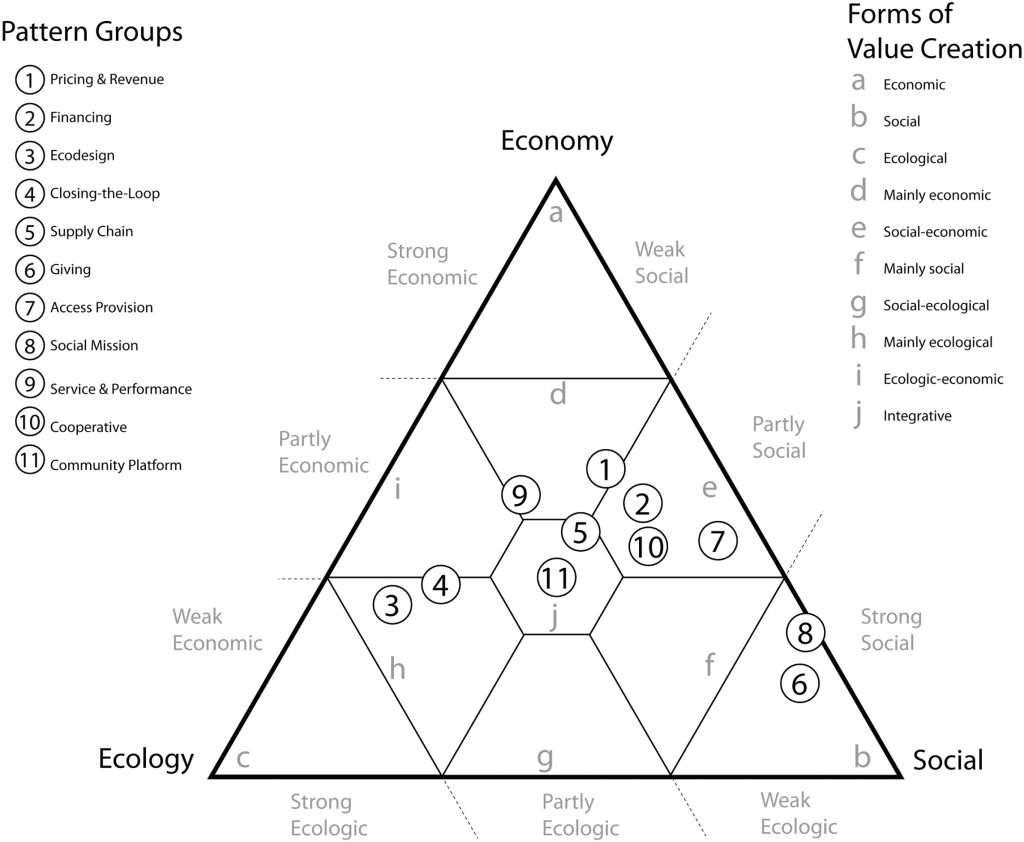
This is a community platform pattern. Instead of private ownership of a product or resource, access becomes community-based.
When a product or other asset is rarely used, expensive, or unproven, fewer people will purchase it. Private ownership is also associated with high costs for consumers, while using more resources.
Collaborative consumption allows a product to be shared among a number of users. Individual users are able to access the product whenever they need to use it, without incurring the higher costs of private ownership. The consumer only needs to pay when they use it.
Example:
Turo, formerly Relayrides, operates a peer-to-peer car sharing marketplace. Private car owners can rent out their vehicles via Turo’s online platform. Thus, this increases the usage of their vehicles while earning money.
A supply chain pattern modifies either the way resources are sourced or how target groups are reached.
Example:
To determine whether there was sufficient customer demand for the Tesla Model 3 to begin production, future model 3 owners were asked to reserve a vehicle by making a deposit of $1000.
Uncertainty creates disincentives for business leaders to change. Transforming your business strategy is complex, making it difficult to move forward. We know that business model innovation can lead to improved thrivability performance. But how do you know which business models will be successful for your industry? And which business models are sustainable?
The answer lies in a transparent Sustainability Performance Scorecard
The THRIVE platform ranks corporate thrivability performance alongside the business model or strategy. This allows consumers to reward sustainable organisations
Currently, the THRIVE platform is a conceptual tool, a proof of concept that is still being developed and refined.
The THRIVE platform is a free online thrivability performance scorecard. It is the only platform that links thrivability performance with business model strategy. The platform can provide the basis to assess business models according to their thrivability.
It uses machine learning to display which business models perform best within an industry. More than a predictive tool, it prescribes the trajectory forward by measuring and guiding entities towards thrivable development and beyond.
12 Foundational Focus Factors form the basis of the Platform. These factors are the necessary conditions to transform humanity towards sustainability and thrivability. The THRIVE Platform adopts a systems-thinking approach to predict and guide your startup. The tool will identify successful business models and strategies within your industry. It guides entities into adopting thrivable development strategies, transforming them into thrivable entities.
It showcases social floors and environmental ceilings, highlighting the safe and just operating space for humankind. The THRIVE Platform also builds on donut economics, strong sustainability, and science and context-based approach. It is founded on the Framework for Strategic Sustainable Development and thus builds upon backcasting principles.
Accuracy will improve with more data and sophisticated machine learning over time. Accuracy depends on the amount of data and the breadth of scope of the machine learning or AI involved. As we collect more data and develop scientific understanding, the accuracy improves.
Sustainability is a measure of something’s ability to continue. The more sustainable something is, the longer it lasts.
Here at THRIVE Project, we don’t just measure sustainability, we focus on thrivability. Sustainability is the bare minimum required to continue. This means that sustainability metrics focus on living hand to mouth, day by day. Thrivability is about going beyond break-even. It means flourishing. This encompasses the concepts of regeneration and resilience.
The THRIVE tool shows that the most sustainable enterprise in the Animal Source Food Production Industry is the Thai Union Group. They are responsible for brands like John West, Chicken of the Sea, and Red Lobster among others. They use the business models P5.1 (Green Supply Chain Management) and P3.2 (Maximise material productivity and energy efficiency). For more information on using the platform or various examples of sustainable business models, check out the video below.